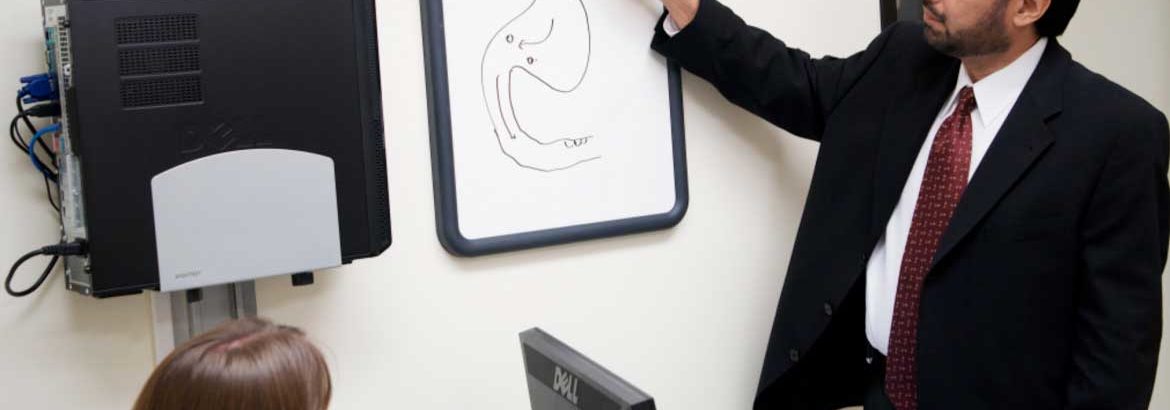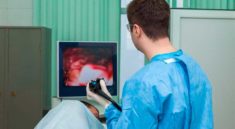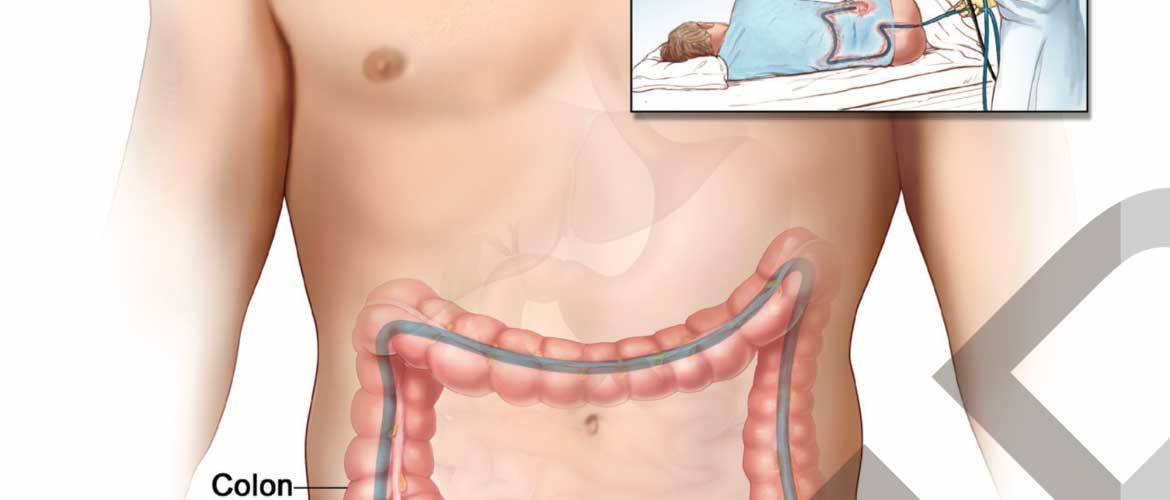
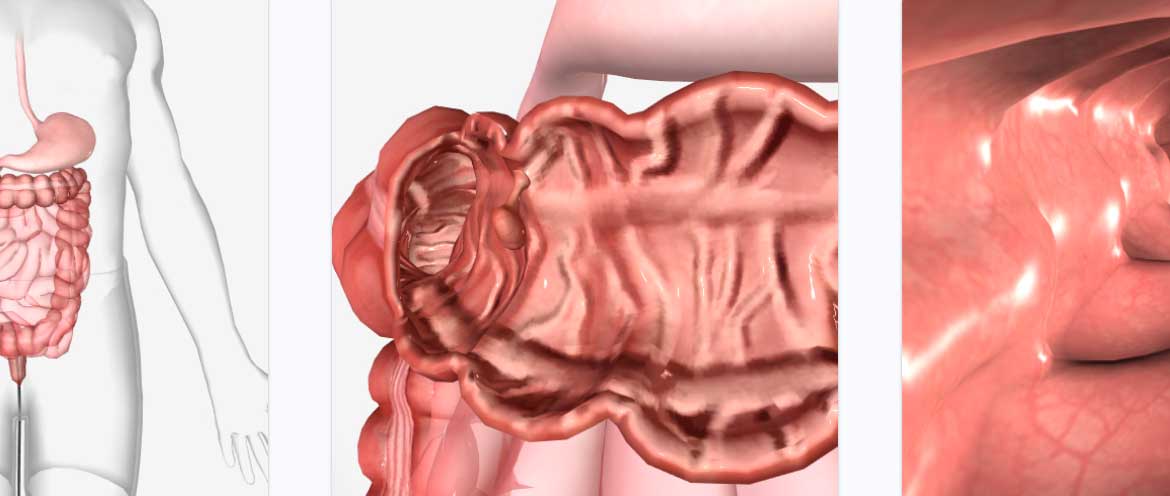
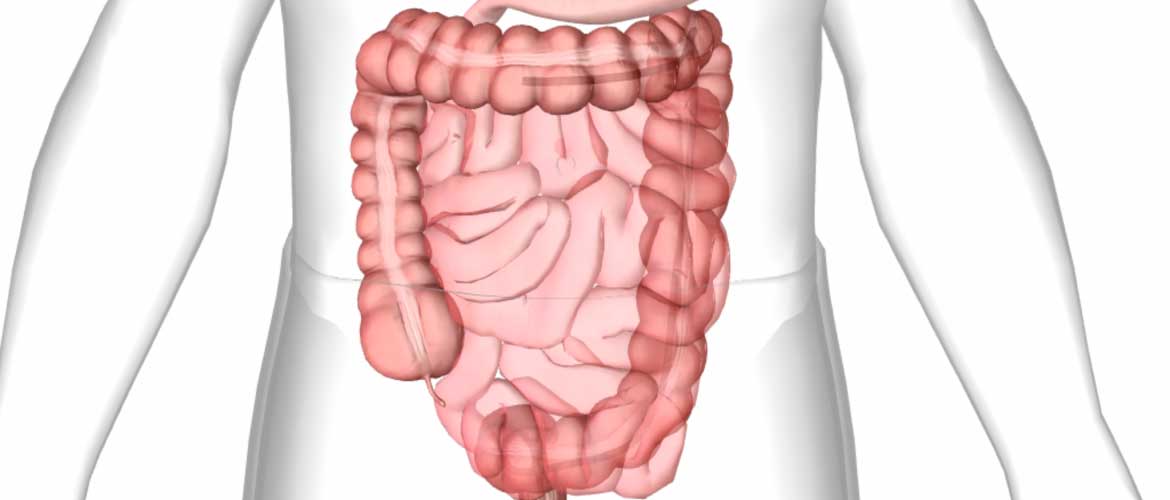
INFORMATION
Colonoscopy and sigmoidoscopy are procedures that let your doctor look inside your large intestine. They use instruments called scopes. Scopes have a tiny camera attached to a long, thin tube. The procedures let your doctor see things such as inflamed tissue, abnormal growths, and ulcers.
Colonoscopy checks your entire colon and rectum. Sigmoidoscopy checks the rectum and the lower colon only.
Your doctor may recommend one of these procedures
- To look for early signs of cancer in the colon and rectum. It may be part of a routine screening, which usually starts at age 50.
- To look for causes of unexplained changes in bowel habits
- To evaluate symptoms like abdominal pain, rectal bleedig, and weight loss
Your doctor can also remove polyps from your colon during these procedures.
You will get written bowel prep instructions to follow at home before the procedure. The bowel prep cleans out the intestine so your doctor can see everything clearly. During a colonoscopy, you get medicines to keep you relaxed. You usually do not need them for a sigmoidoscopy.
How the Test is Performed
Colonoscopy is done most often in a procedure room at your doctor’s office. It can also be done in the outpatient department of a hospital or medical center.
- You will be asked to change out of your street clothes and wear a hospital gown for the procedure.
- You will likely be given medicine into a vein (IV) to help you relax.
- You should not feel any pain. You may be awake during the test and may even be able to speak. You will probably not remember anything.
- You lie on your left side with your knees drawn up toward your chest.
- The scope is gently inserted through the anus. It is carefully moved into the beginning of the large intestine. The scope is slowly advanced as far as the lowest part of the small intestine.
- Air is inserted through the scope to provide a better view. Suction may be used to remove fluid or stool.
- The doctor gets a better view as the scope is moved back out. So, a more careful exam is done while the scope is being pulled back.
- Tissue samples (biopsy) or polypsmay be removed using tiny tools inserted through the scope. Photos may be taken using the camera at the end of the scope. If needed, procedures, such as laser therapy, are also done.
How the Test will Feel
The medicines will make you sleepy so that you may not feel any discomfort or have any memory of the test.
You may feel pressure as the scope moves inside. You may feel brief cramping and gas pains as air is inserted or the scope advances. Passing gas is necessary and should be expected.
After the exam, you may have mild abdominal cramping and pass a lot of gas. You may also feel bloated and sick to your stomach. These feelings will soon go away.
You should be able to go home about 1 hour after the test. You must plan to have someone take you home after the test, because you will be woozy and unable to drive. The providers will not let you leave until someone arrives to help you.
When you are home, follow instructions on recovering from the procedure. These may include:
- Drink plenty of liquids. Eat a healthy meal to restore your energy.
- You should be able to return to your regular activities the next day.
- Avoid driving, operating machinery, drinking alcohol, and making important decisions for at least 24 hours after the test.
Why the Test is Performed
Colonoscopy may be done for the following reasons:
- Abdominal pain, changes in bowel movements, or weight loss
- Abnormal changes (polyps) found on sigmoidoscopyor x-ray tests (CT scan or barium enema)
- Anemiadue to low iron (usually when no other cause has been found)
- Blood in the stool, or black, tarry stools
- Follow-up of a past finding, such as polyps or colon cancer
- Inflammatory bowel disease (ulcerative colitisand Crohn disease)
- Screening for colorectal cancer
Normal Results
Normal findings are healthy intestinal tissues.
What Abnormal Results Mean
Abnormal test results may mean any of the following:
- Abnormal pouches on the lining of the intestines, called diverticulosis
- Areas of bleeding
- Cancer in the colon or rectum
- Colitis (a swollen and inflamed intestine) due to Crohn disease, ulcerative colitis, infection, or lack of blood flow
- Small growths called polyps on the lining of your colon (which can be removed through the colonoscope during the exam)
Risks
Risks of colonoscopy may include any of the following:
- Heavy or ongoing bleeding from biopsy or removal of polyps
- Hole or tear in the wall of the colon that requires surgery to repair
- Infection needing antibiotic therapy (very rare)
- Reaction to the medicine you are given to relax, causing breathing problems or low blood pressure
Are you asleep during a colonoscopy?
A colonoscopy is usually performed under sedation, but some people may choose not to be sedated. Sedation is a medication that is administered directly into a vein. This will help you to feel relaxed and comfortable during your colonoscopy.
How long will it take to recover from a colonoscopy?
What’s the recovery time like? After a colonoscopy, most people are back to work and “normal life” within 24 hours, or after the sedation wears off. It is recommended to refrain from flying for 48 hours after the procedure.
Do you poop during a colonoscopy?
Colonoscopy prep medications. Laxative medications help the stool to pass smoothly through the colon. Before a colonoscopy, osmotic laxatives are most commonly prescribed. … Because these medications work by keeping water in the bowel, it is important to drink enough liquid to stay hydrated.
How long does it take to poop after a colonoscopy?
It generally takes 10 to 30 minutes to pass this gas. Then you are good to go. If you start again with the food, remember your colon is empty and needs to fill up before you have a bowel movement. This may take one to two to sometimes three daysdepending on how much roughage you eat.
Can I go to work after a colonoscopy?
Don’t drive or make important decisions or go back to work for the rest of the day. If your doctor removed a polyp during your colonoscopy, you may be advised to eat a special diet temporarily. You may feel bloated or pass gas for a few hours after the exam, as you clear the air from your colon
Can I have coffee on the morning of a colonoscopy?
Colonoscopy prep diet. … The day before the colonoscopy procedure — Don’t eat solid foods. Instead, consume only clear liquids like clear broth or bouillon, black coffee or tea, clear juice (apple, white grape), clear soft drinks or sports drinks, Jell-O, popsicles, etc.
Is Coke a clear liquid for colonoscopy?
The following foods are generally allowed in a clear liquid diet: Water (plain, carbonated or flavored) Fruit juices without pulp, such as apple or white grape juice. … Carbonated drinks, including dark sodas (cola and root beer)

